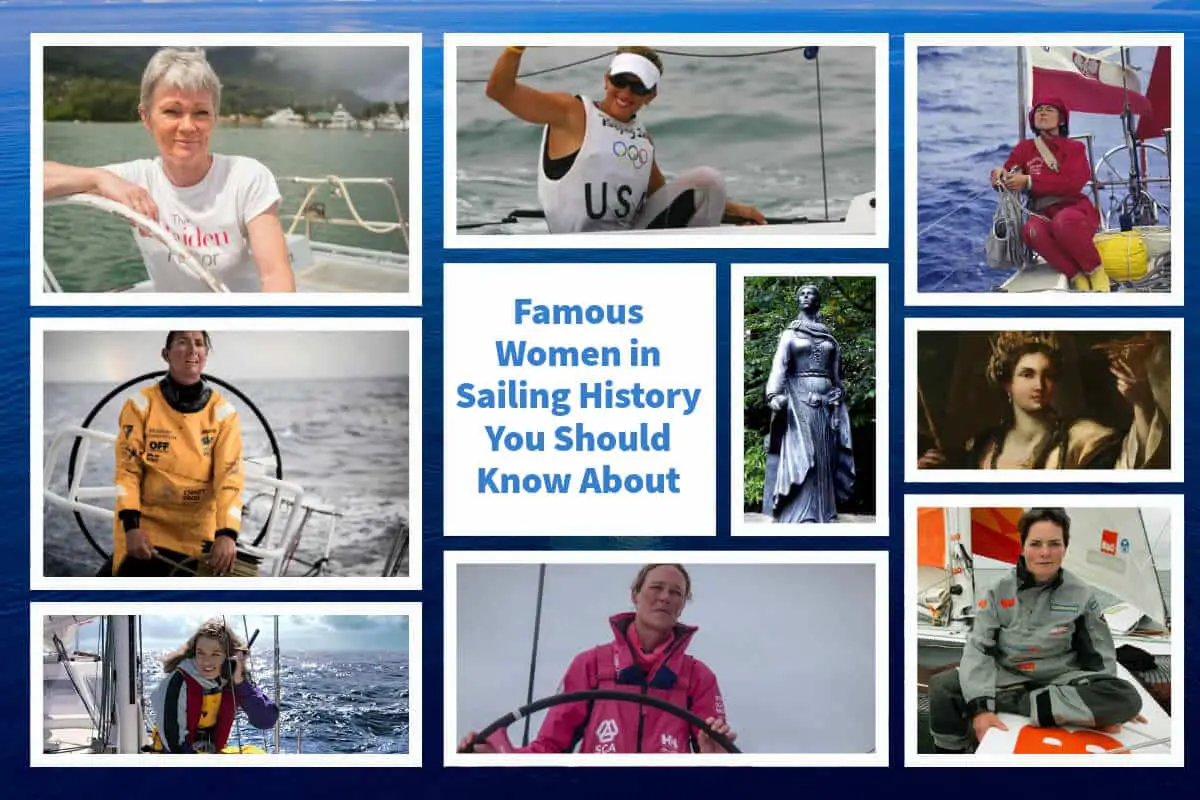The history of sailing has long been dominated by tales of male explorers, naval commanders, and adventurers. Yet throughout the centuries, remarkable women have defied convention, broken barriers, and left indelible marks on maritime history. These pioneering women didn’t just participate in sailing—they revolutionized it, redefined it, and proved that the sea recognizes no gender when it comes to courage, skill, and determination.
From ancient queens who commanded vast fleets to modern-day solo circumnavigators who push the boundaries of human endurance, women have been integral to the evolution of sailing. Their stories are not just inspiring footnotes in maritime history; they’re essential chapters that reveal the true scope of human achievement on the world’s oceans. These women faced not only the sea’s natural challenges but also societal barriers that often seemed insurmountable, making their accomplishments all the more extraordinary.
Table of Contents
- Ancient and Medieval Maritime Queens
- Pioneering Ocean Racers and Record Breakers
- Modern Racing Legends
- Contemporary Trailblazers
- Breaking Barriers in Professional Sailing
- The Ripple Effect: Inspiring Future Generations
- Lessons from the Sea: What These Women Teach Us
- Charting the Course Forward
- Related Questions
Ancient and Medieval Maritime Queens
Artemisia I of Halicarnassus (5th Century BCE)

Long before the term “girl power” existed, Artemisia I commanded warships and earned the respect of emperors. This remarkable woman ruled Halicarnassus (modern-day Turkey) and commanded five ships in Xerxes’ fleet during the Persian invasion of Greece in 480 BCE. What makes her story extraordinary isn’t just her naval command, but the strategic brilliance she displayed during the Battle of Salamis.
When the Persian fleet faced disaster, Artemisia made a calculated decision that saved her life and ships: she rammed and sank a Persian vessel to convince the Greeks she was on their side, allowing her to escape. This tactical maneuver was so clever that Xerxes reportedly said, “My men have become women, and my women have become men,” acknowledging her superior seamanship and strategic thinking.
Artemisia’s legacy extends beyond military tactics. She advised Xerxes on naval strategy and was one of the few commanders whose counsel he actively sought. Her story, preserved by the historian Herodotus, demonstrates that women’s maritime leadership has ancient roots and that exceptional seamanship has always transcended gender boundaries.
Grace O’Malley (1530-1603): The Pirate Queen of Ireland
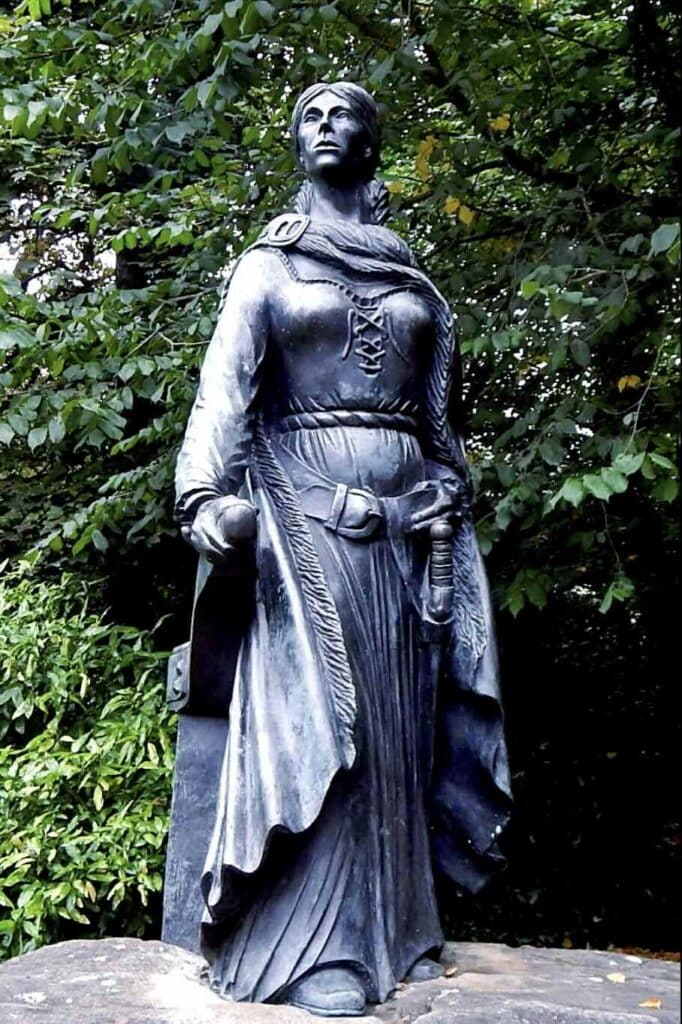
Grace O’Malley, also known in Irish as Gráinne Mhaol, was perhaps one of history’s most famous female pirate leaders. Born into a seafaring family on Ireland’s western coast, she inherited a fleet of ships and used them to control the waters around Connacht. O’Malley wasn’t just a pirate; she was a political leader, naval commander, and shrewd businesswoman who challenged both English authority and traditional gender roles.
Her maritime empire included over 20 ships and 200 followers. She levied taxes on fishing boats, collected tribute from merchant vessels, and provided protection services—essentially running a sophisticated maritime protection racket. Her knowledge of Ireland’s treacherous western waters was unmatched, and she used this expertise to evade English naval forces for decades.
Perhaps most remarkably, O’Malley negotiated directly with Queen Elizabeth I in 1593, securing the release of her captured family members and winning permission to continue her maritime activities in exchange for supporting English interests against Spanish invasion threats. This meeting between two powerful women—one ruling from a palace, the other from a ship’s deck—remains one of history’s most fascinating diplomatic encounters.
Pioneering Ocean Racers and Record Breakers
Dame Naomi James (1949-): Breaking Solo Sailing Barriers
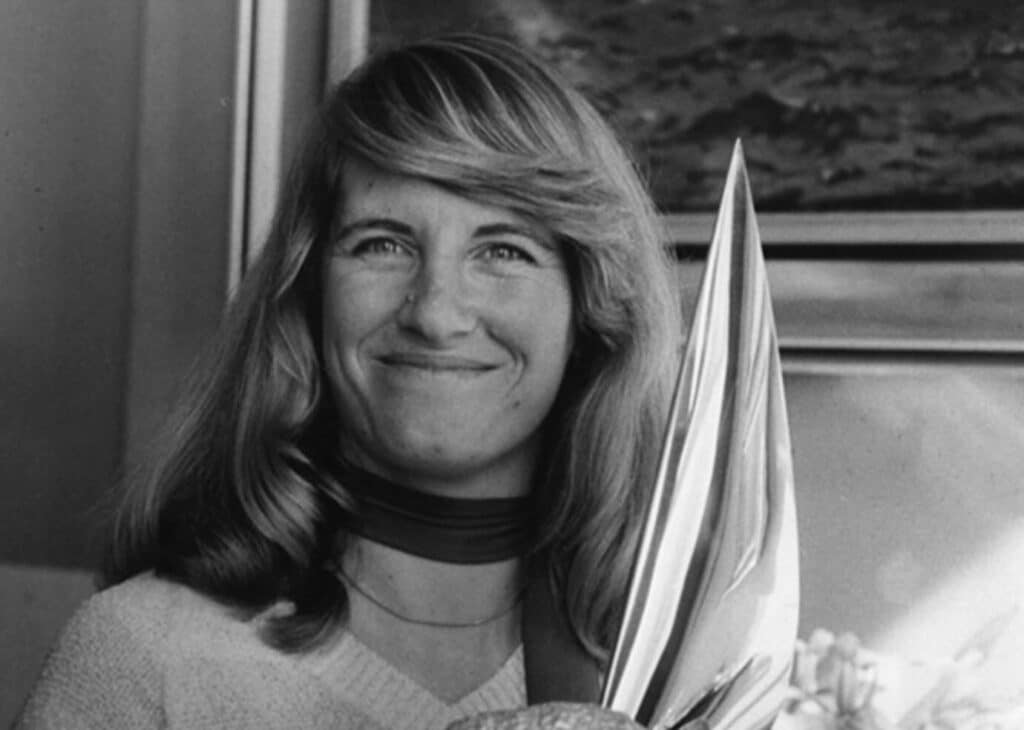
In 1977-1978, New Zealand-born Naomi James became the first woman to sail solo around the world via Cape Horn, completing the journey in 272 days and breaking Sir Francis Chichester’s record by two days. Her achievement was groundbreaking not just for its speed, but for proving that women could handle the most challenging solo sailing conditions on Earth.
James’s journey aboard her 53-foot yacht Express Crusader took her through the Southern Ocean’s notorious waters, where she faced 60-foot waves, hurricane-force winds, and complete isolation. Her detailed logs reveal not just the physical challenges but the psychological strength required for such an undertaking. She wrote candidly about fear, loneliness, and the mental strategies she developed to cope with extreme conditions.
What makes James’s achievement particularly significant is the context of 1970s attitudes toward women in extreme sports. Many questioned whether women had the physical and mental capacity for such challenges. James didn’t just prove them wrong; she excelled, earning the title of Dame Commander of the Order of the British Empire and inspiring countless women to pursue their maritime dreams.
Her success opened doors for future generations of female sailors, demonstrating that solo ocean sailing was not an exclusively male domain. James continued sailing competitively and became an advocate for women in sailing, mentoring young female sailors and promoting gender equality in maritime sports.
Krystyna Chojnowska-Liskiewicz (1936-2021): The True First
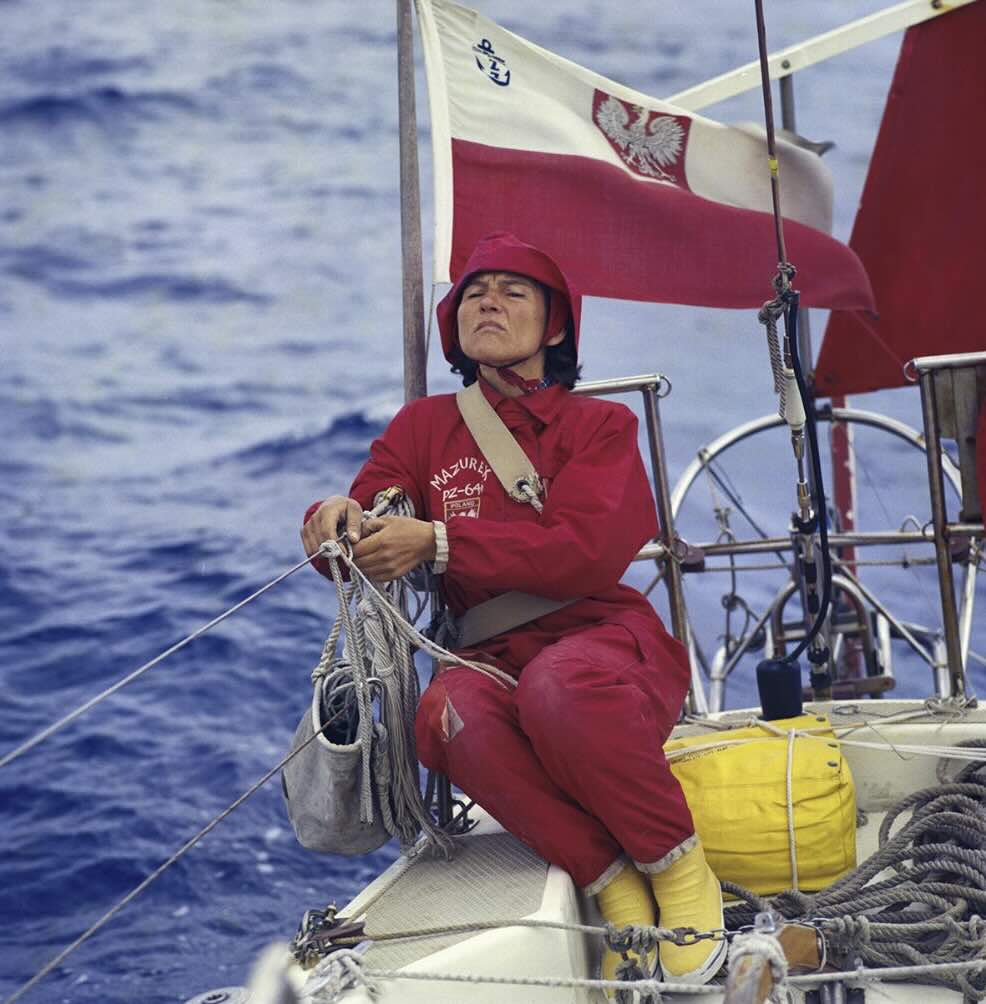
While Naomi James often receives credit as the first woman to sail solo around the world, that honor belongs to Polish sailor Krystyna Chojnowska-Liskiewicz. She completed her circumnavigation in 1976, two years before James, but received less international recognition due to political circumstances and the route she chose.
Chojnowska-Liskiewicz’s journey began in the Canary Islands in 1976 and took her through the Panama Canal rather than around Cape Horn. Her 31,166-nautical-mile voyage aboard the 32-foot yacht Mazurek took 401 days of sailing time spread over two years. Despite taking a different route from James, her achievement was officially recognized by the World Sailing Speed Record Council.
Her story highlights how women’s achievements in sailing have sometimes been overlooked or undervalued. Chojnowska-Liskiewicz faced not only the usual challenges of solo sailing but also the additional burden of representing her country during the Cold War era. Her quiet determination and methodical approach to ocean sailing demonstrated that there are many paths to achievement, and that recognition doesn’t always come immediately or equally.
Modern Racing Legends
Dame Ellen MacArthur (1976-): Redefining Possibility
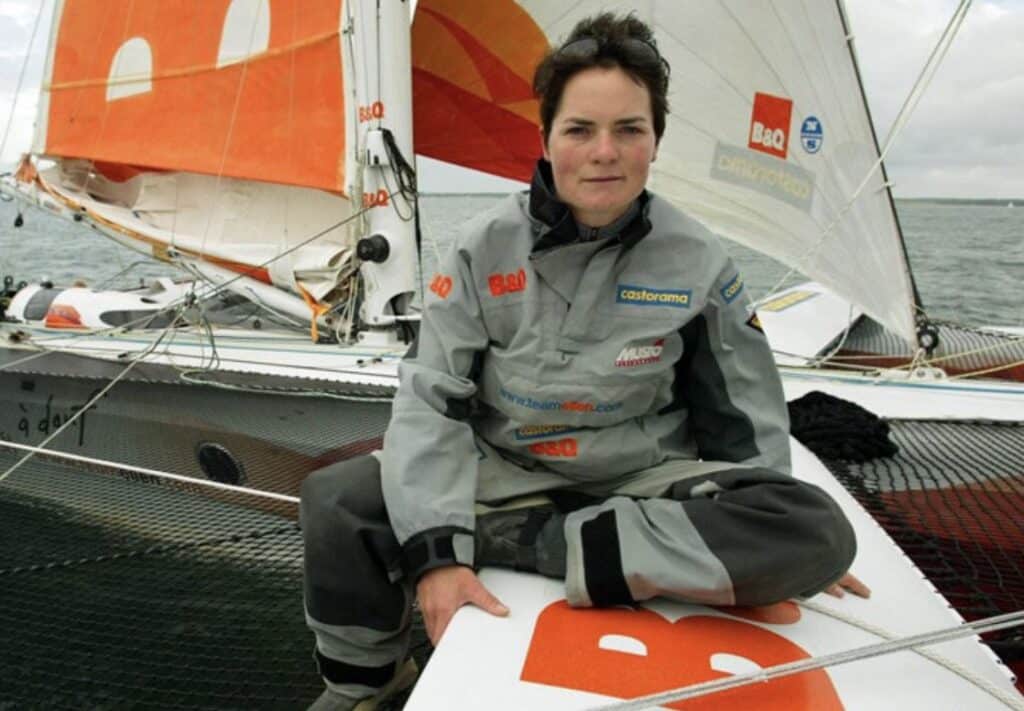
Ellen MacArthur’s name is synonymous with pushing the absolute limits of solo sailing. Her 2005 solo round-the-world record of 71 days, 14 hours, 18 minutes, and 33 seconds stood as the fastest solo circumnavigation for eight years and remains one of sailing’s most impressive achievements.
MacArthur’s approach to sailing was revolutionary in its precision and preparation. She treated her campaigns like space missions, analyzing every detail from nutrition and sleep patterns to weather routing and equipment optimization. Her 75-foot trimaran B&Q/Castorama was essentially a floating laboratory where she pushed human endurance to its limits while maintaining peak performance.
What sets MacArthur apart isn’t just her record-breaking speed, but her holistic approach to sailing and life. After retiring from competitive sailing at the height of her success, she founded the Ellen MacArthur Foundation, focusing on circular economy principles inspired by her experiences managing limited resources during long ocean passages.
Her influence extends far beyond sailing records. MacArthur demonstrated that excellence in sailing requires not just physical courage but intellectual rigor, strategic thinking, and systems management. She inspired a generation of sailors to approach the sport with scientific precision while maintaining respect for the ocean’s power.
Tracy Edwards (1962-): Leading by Example
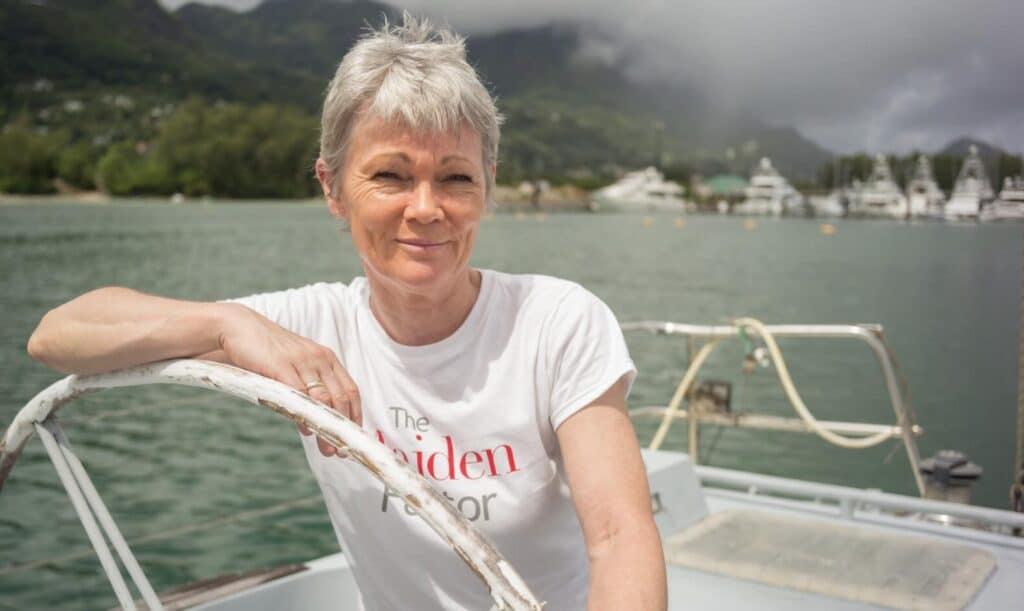
Tracy Edwards revolutionized sailing by proving that all-female crews could compete at the highest levels of ocean racing. Her story began with personal struggles—she was a troubled teenager who found purpose and direction through sailing. This background provided her with unique insight into the transformative power of sailing and motivated her to create opportunities for other women.
In 1989, Edwards skippered the first all-female crew in the Whitbread Round the World Race (now the Volvo Ocean Race) aboard Maiden. The sailing establishment was skeptical, with many predicting failure or worse. Instead, Edwards and her crew not only completed the race but won two legs and finished second overall in their class, proving that women could excel in the world’s most demanding sailing competition.
The Maiden campaign faced enormous challenges beyond the usual difficulties of ocean racing. Securing sponsorship was nearly impossible, as potential backers doubted women’s ability to handle the physical and mental demands of the race. Edwards worked tirelessly to fund the campaign, often using her own money and taking on debt to keep the project alive.
Her success opened doors throughout the sailing world. The Maiden campaign demonstrated that diversity in sailing wasn’t just about fairness—it was about accessing the full range of human talent and perspective. Edwards continued promoting women’s participation in sailing and became a powerful advocate for gender equality in sports.
Contemporary Trailblazers
Dee Caffari (1973-): The Ultimate Ocean Racer
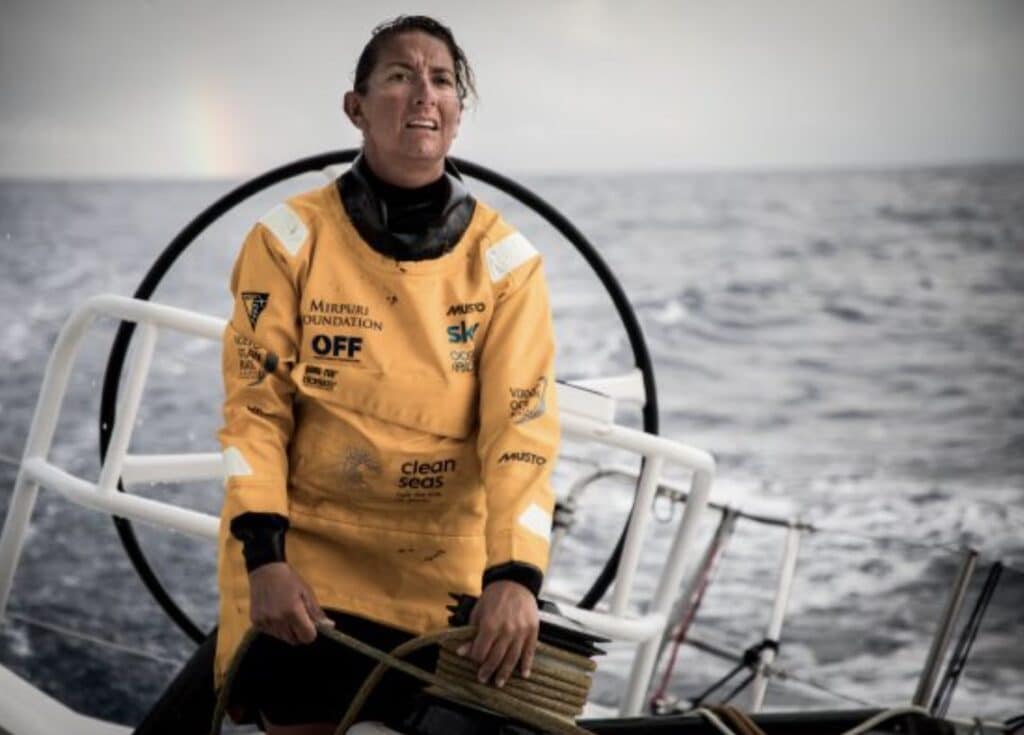
Dee Caffari holds the unique distinction of being the only woman to have sailed solo around the world in both directions—and she’s done it multiple times. Her first solo circumnavigation in 2006 made her the first woman to sail solo around the world against the prevailing winds and currents, a route considered significantly more challenging than the traditional westward passage.
Caffari’s approach to sailing combines meticulous preparation with adaptability under pressure. Her 2006 voyage aboard Aviva took 178 days and required her to navigate some of the world’s most challenging waters while sailing against natural patterns that have guided mariners for centuries. The psychological challenge of this “wrong way” route was as significant as the physical demands.
Beyond her solo achievements, Caffari has been instrumental in developing opportunities for women in professional sailing. She’s skippered boats in multiple Volvo Ocean Races, mentored young female sailors, and consistently advocated for gender equality in sailing. Her career demonstrates that sustained excellence in sailing requires not only individual achievement but also a commitment to developing the sport for future generations.
Caffari’s influence extends to sailing education and youth development. She understands that inspiring the next generation requires both achieving personal goals and creating pathways for others to follow. Her work with sailing programs and youth development initiatives ensures that her impact will be felt long after her competitive career ends.
Jessica Watson (1993-): Young and Fearless
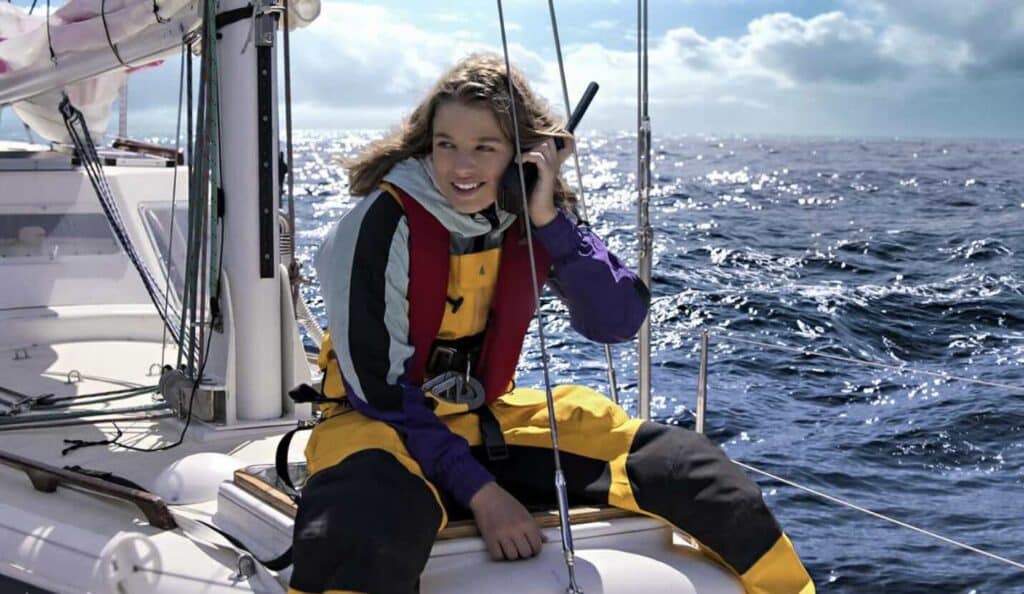
At just 16 years old, Jessica Watson became the youngest person to sail solo, non-stop, and unassisted around the world. Her 2009-2010 voyage aboard the 34-foot yacht Ella’s Pink Lady captured global attention and sparked debates about age limits and risk-taking in extreme sports.
Watson’s achievement was remarkable not just for her age, but for her mature approach to preparation and risk management. Despite criticism from some quarters about the wisdom of allowing such a young person to attempt such a dangerous journey, Watson demonstrated exceptional seamanship, weather routing skills, and crisis management throughout her 210-day voyage.
Her journey faced numerous challenges, including equipment failures, severe weather, and the psychological pressures of solo sailing at such a young age. Watson’s ability to handle these challenges while maintaining her course and schedule demonstrated that age doesn’t necessarily correlate with capability in sailing.
Watson’s story resonates particularly with young people and parents, showing that with proper preparation, training, and support, young sailors can achieve extraordinary things. Her success has inspired sailing programs worldwide to take young sailors more seriously and provide them with opportunities to develop advanced skills.
Breaking Barriers in Professional Sailing
The Rise of Female Skippers in Professional Racing
The landscape of professional sailing has been transformed by women who refused to accept traditional limitations. Sailors like Carolijn Brouwer, who became the first woman to win the Volvo Ocean Race as a crew member in 2017-18 and later as a skipper candidate, represent a new generation of female sailing professionals.
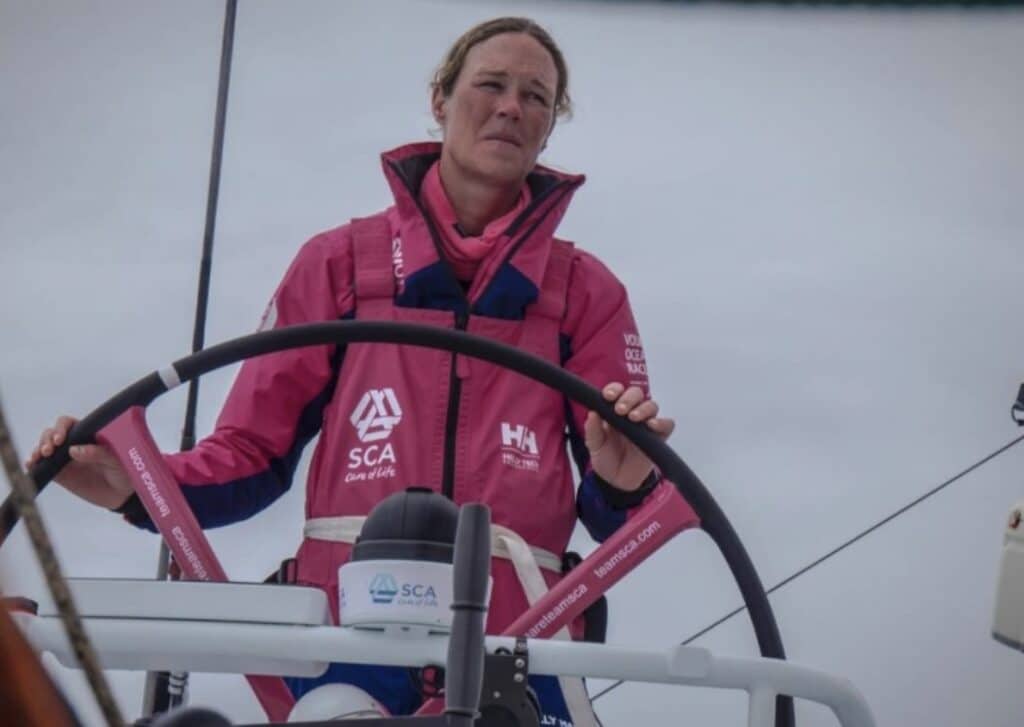
These women have demonstrated that success in professional sailing is not determined by gender, but rather by skill, determination, and leadership. Their achievements have forced the sailing world to reconsider long-held assumptions about women’s capabilities in extreme sailing conditions.
The success of female professionals has also changed team dynamics in sailing. Mixed-gender crews are now commonplace in major races, and research has shown that diverse teams often outperform homogeneous ones. This shift represents not just social progress, but also a practical recognition that the best teams utilize the best available talent, regardless of gender.
Coaching and Leadership Roles
Women have also made significant strides in sailing coaching and leadership positions. Coaches like Anna Tunnicliffe-Tobias, an Olympic gold medalist who transitioned to coaching, have developed innovative training methods and helped elevate the performance of both male and female sailors.
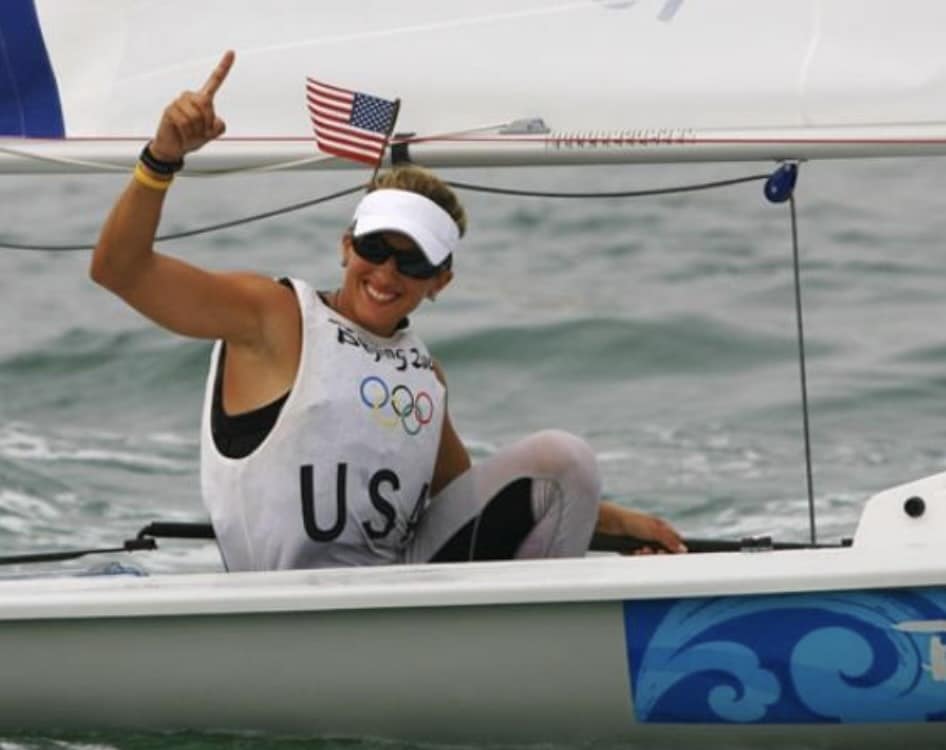
Female sailing coaches bring unique perspectives to training and team development. Their experiences overcoming barriers and succeeding in challenging environments provide valuable insights for all sailors, regardless of gender. Many report that female coaches excel at communication, team building, and creating inclusive training environments.
The presence of women in leadership roles throughout sailing—from race management to sailing federation governance—has helped create more opportunities for female participation at all levels of the sport. This systemic change ensures that women’s contributions to sailing will continue growing in scope and impact.
The Ripple Effect: Inspiring Future Generations
Changing Perceptions and Opportunities
The achievements of pioneering women sailors have profoundly changed the sailing world’s perspective on female participation. Sailing clubs, racing organizations, and training programs that once excluded or discouraged women now actively recruit and support female sailors.
This change is evident in youth sailing programs, where girls now participate in equal numbers with boys in many regions. The visible success of female sailing role models has shown young girls that sailing offers unlimited opportunities for adventure, competition, and personal growth.
The transformation extends beyond participation numbers to leadership development. Young women entering sailing today see female coaches, race officers, boat builders, and sailing executives as the norm rather than the exception. This normalization of women’s leadership in sailing creates a positive feedback loop that encourages even greater female participation.
Technological and Safety Innovations
The unique perspectives and needs of women sailors have driven numerous innovations in sailing technology and safety. Equipment manufacturers have developed gear specifically tailored to women’s physiology. In contrast, safety innovations have often emerged from the experiences and insights of female sailors.
Women sailors have also been leaders in sustainable sailing practices and environmental awareness. Their holistic approach to sailing often includes consideration of environmental impact, leading to innovations in eco-friendly boat building, sustainable racing practices, and ocean conservation initiatives.
Lessons from the Sea: What These Women Teach Us
Perseverance Against All Odds
The common thread among all these remarkable women is their refusal to accept limitations imposed by others. Whether facing 60-foot waves in the Southern Ocean or skeptical sponsors in corporate boardrooms, these sailors demonstrated that perseverance and skill ultimately triumph over prejudice and doubt.
Their stories teach us that breaking barriers requires not just individual courage but sustained commitment to excellence. Each of these women had to outperform their male counterparts to gain recognition, but their superior performance ultimately changed perceptions and opened doors for others.
The Power of Preparation and Precision
Many of the most successful female sailors are known for their meticulous preparation and attention to detail. This approach often compensates for perceived physical disadvantages, demonstrating that sailing success depends more on intelligence, planning, and execution than on raw physical strength.
Their methodical approaches to sailing have raised standards throughout the sport. Male sailors have adopted training methods, preparation techniques, and strategic approaches pioneered by their female counterparts, demonstrating that innovation in sailing often originates from those who must devise creative solutions to overcome challenges.
Leadership and Mentorship
Perhaps most importantly, these pioneering women have consistently used their success to create opportunities for others. Rather than simply achieving personal goals, they’ve built programs, mentored young sailors, and advocated for systemic changes that benefit all participants in sailing.
This commitment to lifting others demonstrates that authentic leadership extends beyond personal achievement to community building and positive change. Their legacy lies not just in records broken or races won, but in the countless sailors they’ve inspired and the barriers they’ve permanently removed.
Charting the Course Forward
The women profiled here represent just a fraction of the remarkable female sailors who have shaped maritime history. From ancient queens commanding battle fleets to modern solo circumnavigators pushing the limits of human endurance, women have consistently proven that the sea recognizes courage, skill, and determination regardless of gender.
Their achievements have transformed sailing from a male-dominated pursuit into a sport where excellence is measured by performance rather than gender. Today’s young female sailors inherit a legacy of possibility created by these pioneers, along with the responsibility to continue expanding opportunities for future generations.
The stories of these remarkable women remind us that barriers exist to be broken, that limitations are often artificial constructs rather than natural laws, and that the combination of passion, preparation, and perseverance can overcome seemingly impossible odds. They’ve shown us that the sea’s greatest lessons—about courage, resilience, and the power of human determination—are available to anyone willing to venture beyond the horizon.
As sailing continues to evolve, the influence of these pioneering women will be felt in every aspect of the sport. Their legacy lives on not just in record books and history texts, but in every young girl who looks at the ocean and sees not a barrier, but an invitation to adventure. The wind that filled their sails continues to blow, carrying forward their spirit of exploration, determination, and the unshakeable belief that the sea belongs to all who dare to embrace its challenges.
At A Bus On A Dusty Road, we talk about travel, life, sailing, and ex-pat living. We are all about “Living Life As A Global Citizen.” We explore sailing, social, cultural, and economic issues, and travel.
We would love to have you be part of our community. Sign up for our newsletter to keep up-to-date by clicking here. If you have any questions, you can contact me, Anita, by clicking here.
Listen to our Podcast called Dusty Roads. You can find it on all major podcast platforms. Try out listening to one of our podcasts by clicking here.
Subscribe to our A Bus On A Dusty Road YouTube Channel with great videos and information by clicking here.
Related Questions
What Is Jibing In Sailing? Steps To A Proper Controlled Jibe
A jibe in sailing is when the boat moves with the stern through the wind. In a jibe, the stern will move through the wind. Like any sailing maneuver, when you have a crew, the helmsman or the captain steering the boat needs to adequately communicate with the crew about what is happening so that they know; this is especially true when jibing.
By clicking here, you can discover What Is Jibing In Sailing? Steps To A Proper Controlled Jibe.
What Is Tacking In Sailing? Steps To A Proper Tack
Tacking is when you move the boat’s bow into the wind to turn the boat’s direction. It is a very common maneuver that all sailors must learn to master. But with any sailing maneuver, there are proper steps; you must know to do a good and safe tack.
By clicking here, you can discover What Is Tacking In Sailing? Steps To A Proper Tack
What Is The Sailing Term For “No Wind”?
The term calm or becalm is used to describe sailing with no wind. In ancient times, the sailors also used the word Tide Over to indicate that there was no wind, so they were Tide Over or stuck without being able to sail.
By clicking here, you can discover What Is The Sailing Term For “No Wind”?

